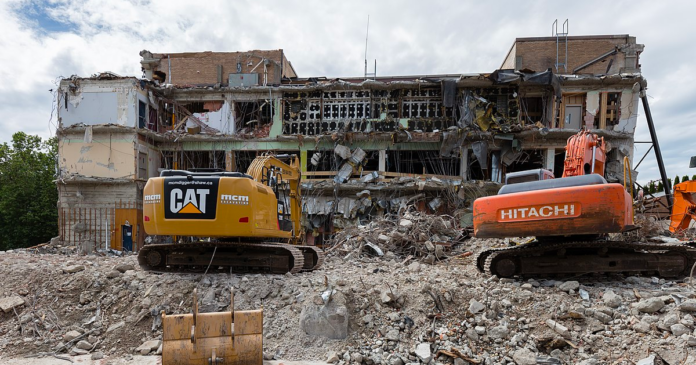With slow labour force growth, supply chain issues and record-high job vacancies, the construction industry is experiencing serious challenges as many contractors are forced to delay or cancel projects.
“It’s probably one of the toughest labour markets we’ve seen in a while,” said the chief operating officer for PCL Constructions Inc. Chris Gower. “This scarcity of Labour is driving up costs and it’s also making us have to make tough decisions to turn down work.”
Gower said PCL has been turning down opportunities “simply because we don’t have the resources to manage it,” saying it was not the case just two years ago.
Gower also said that a lack of labour can affect not only clients but also families who are expecting to move into new homes and hospitals that require renovations to treat patients.
Construction is among several industries reporting increases in job vacancies according to BuildForce Canada, a national organization that represents the construction industry.
“We certainly don’t think it’s going to get better anytime soon,” said BuildForce’s executive director Bill Ferreira. “The demand for construction services is very high, particularly in Nova Scotia, Ontario, Quebec and British Columbia, but not exclusively.”
BuildForce reported investments in construction rebounded in 2021 as the economy started recovering from the pandemic, but the labour force has not been able to keep up.
“Those workers that were available are all being swallowed up by the expansion in demand and so you’re seeing declining unemployment rates in the construction industry,” he said, noting that nearly all trades – from carpenters, to electricians and plumbers – are experiencing the same issues.
Statistics Canada recorded all-time high job vacancies in construction, with employers looking to fill almost 90,000 vacant positions as of April 2022, doubling what it was in October 2020. Vacancies across many trade occupations is up 97%, and carpenters up nearly 150%.
Employment and Social Development Canada said demand for trades is likely to remain high. Citing BuildForce, Statistics Canada said the industry needs to recruit over 300,000 new workers in the next decade to meet demands.
In response, the federal government is allowing Canadian companies to hire significantly more temporary foreign workers (TFWs) in order to ease labour shortages.
As of April 30, employers have been allowed to increase the number of low-wage TFWs from 10% to 20% of their total workforce. Industries affected include food manufacturing, healthcare, nursing and residential care, accommodation and food services.
Employers will also be able to keep TFWs in positions for 270 days, instead of the current 180 days. The government is also expanding the time that a foreign worker hired through the Global Talent Streams program can be employed in Canada from two years to three.
“As we begin to recover from the pandemic and look to fill remaining job vacancies, we will continue to make our Temporary Foreign Worker Program more accessible, efficient and agile to support employers who are looking to staff up and grow their operations,” the federal Minister of Immigration, Refugees and Citizenship Sean Fraser said in a statement.





















